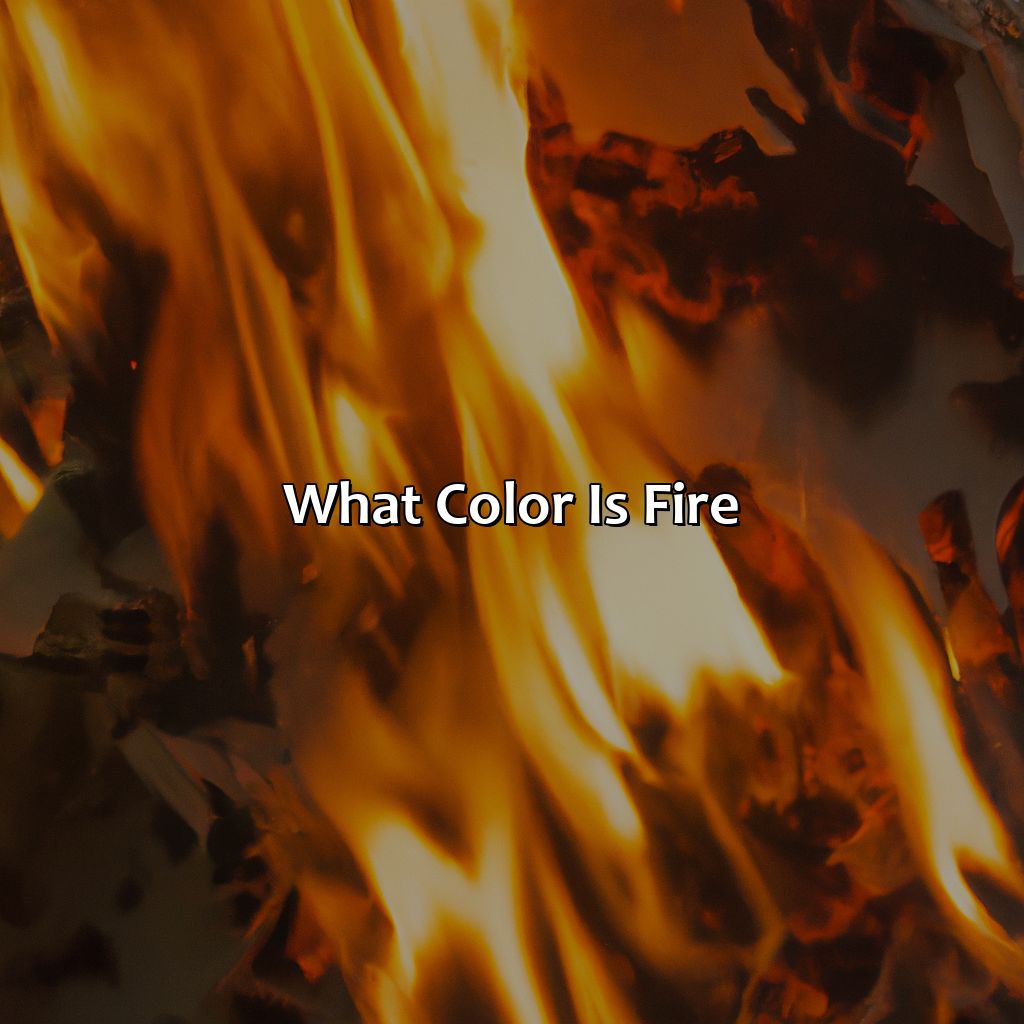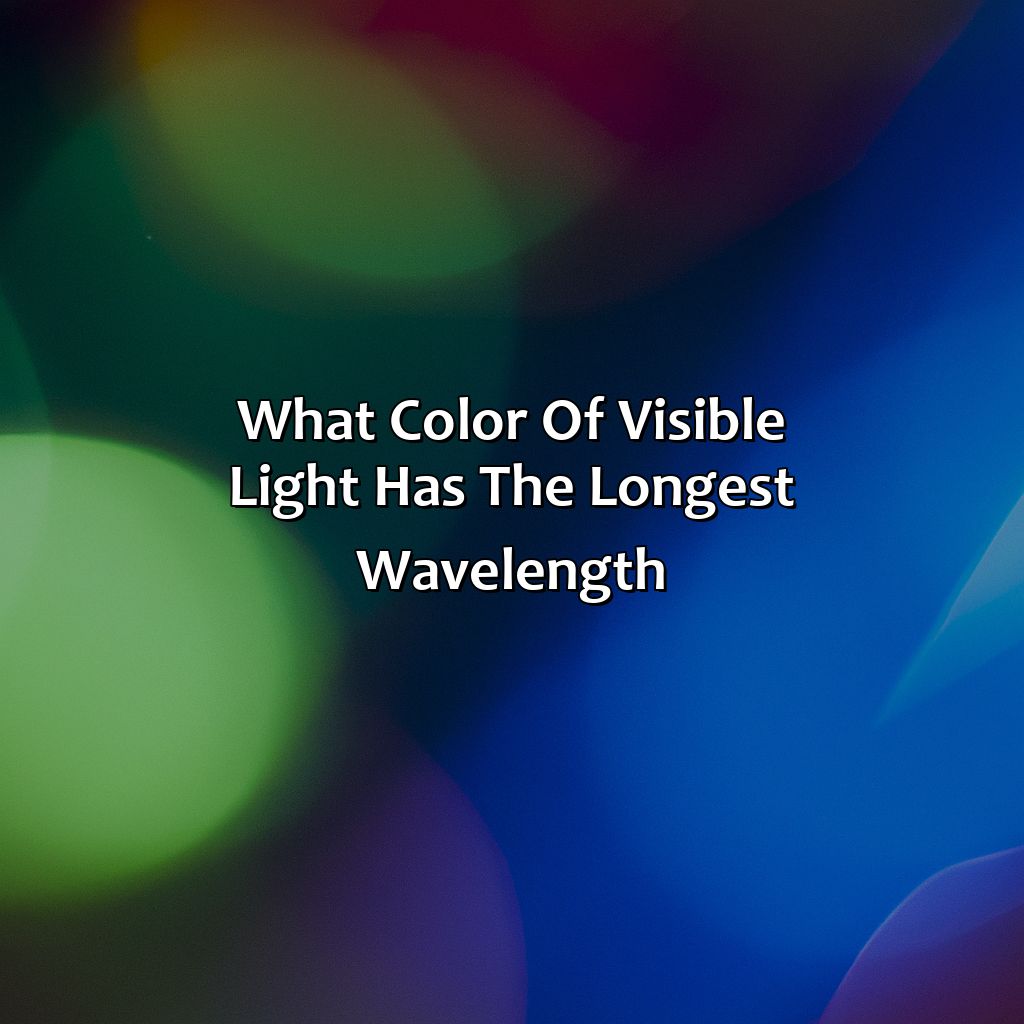Key Takeaway:
- The color of fire depends on various factors such as its temperature, composition, and material. Flames can range from red and orange to yellow and blue.
- Flame color is important in different industries, such as pyrotechnics, fireworks, photography, design, branding, and storytelling. It can also have symbolic and psychological significance.
- Understanding the science behind fire and light, as well as color perception, can help explain the different colors of fire and their practical applications. It is an important topic for both scientific and artistic fields.
Overview of Fire and Color Perception
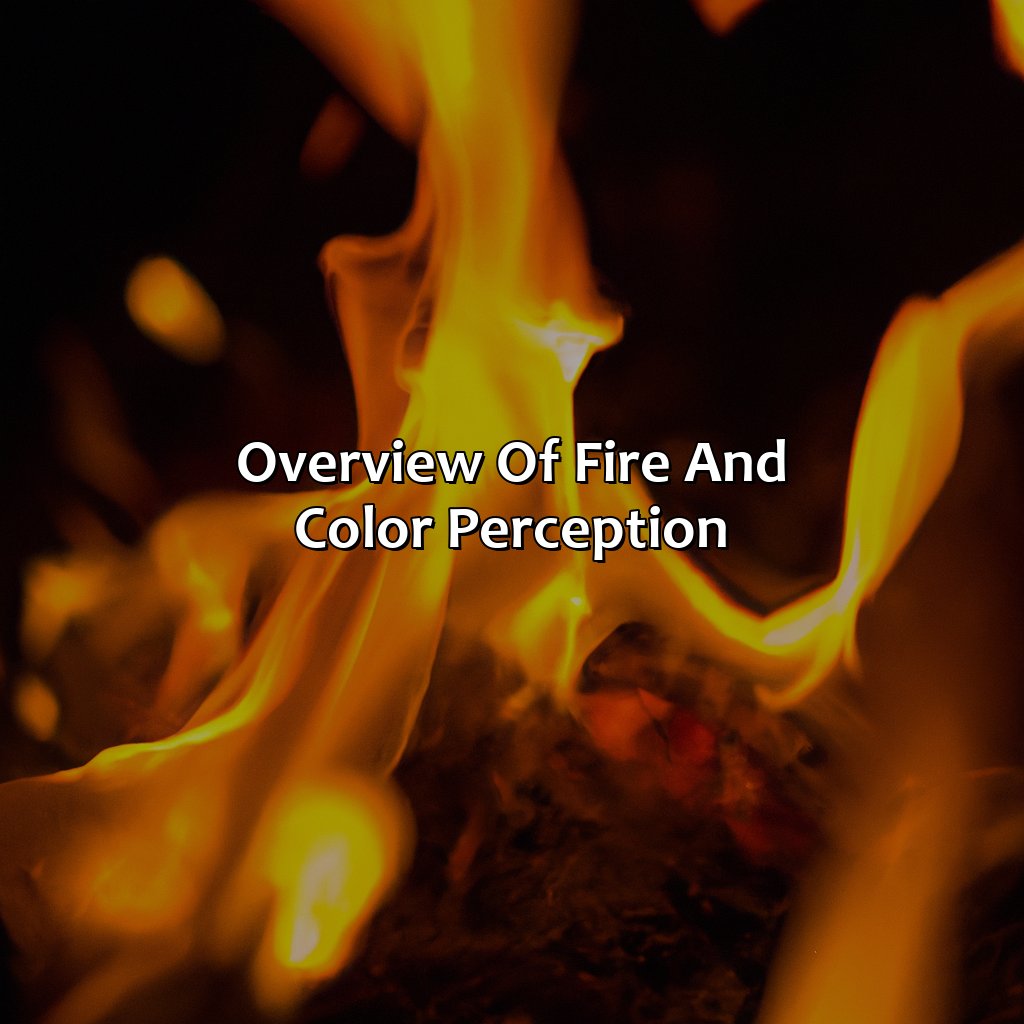
Photo Credits: colorscombo.com by Daniel Rivera
Fire is a complex physical phenomenon that involves the release of heat and light energy due to chemical reactions. The perception of color in fire is mainly due to the emission of light energy at different wavelengths. The color of fire depends on the temperature, fuel, and oxygen supply. Fire emits colors ranging from blue and white to yellow and red.
Our perception of color in fire is influenced by our eyes and brain, which interpret the different wavelengths of light emitted by the fire. Understanding the relationship between fire color perception and fire and light is important for a variety of applications, including safety and pyrotechnics. By analyzing the color of the flames, we can gather information about the temperature, fuel, and chemical composition of the fire. This knowledge is crucial for firefighters, chemists, and scientists.
To fully understand fire color perception, we need to consider the role of human perception and the physical properties of the fire. By delving deeper into this subject, we can unlock crucial insights into one of nature’s most fascinating phenomena. Don’t miss out on the opportunity to learn more about fire and color perception.
Science of Fire and Light
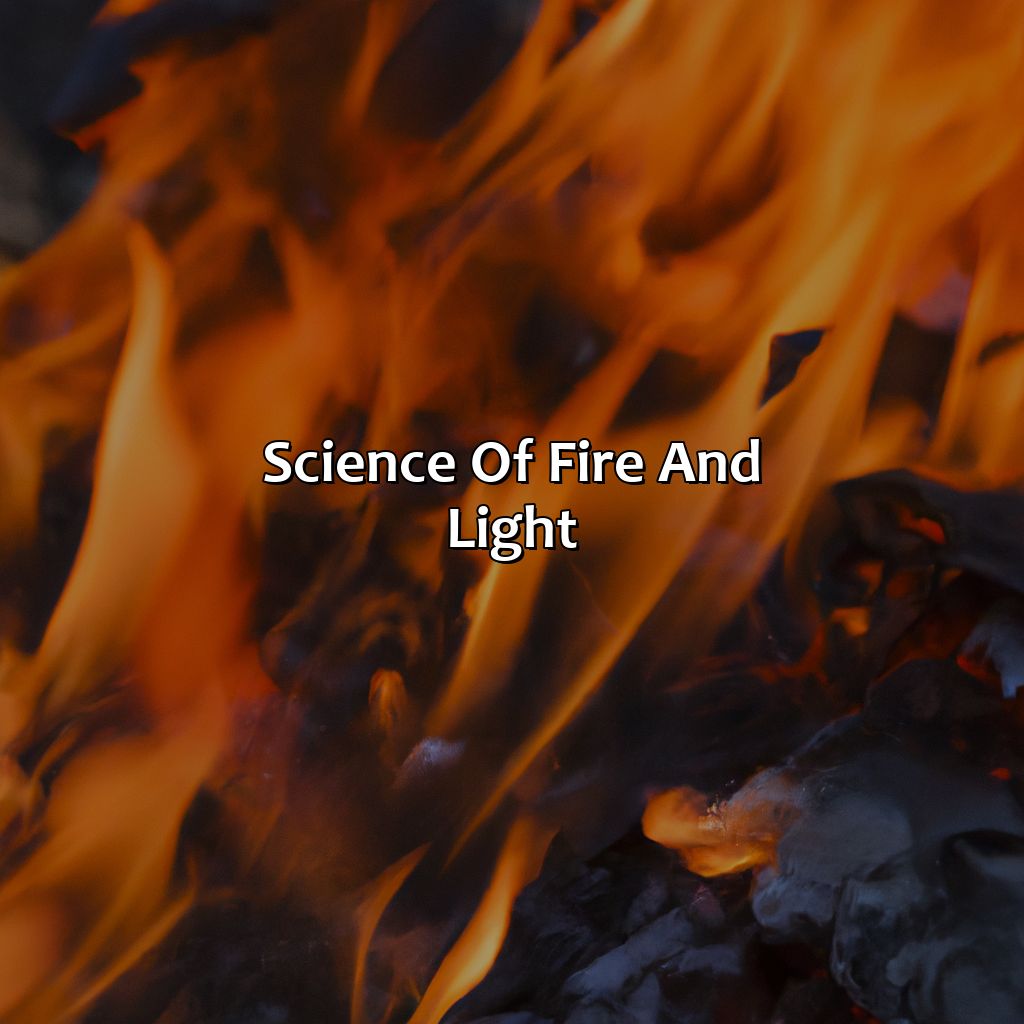
Photo Credits: colorscombo.com by Lawrence Green
To grasp the science of fire and light, you must know more! What is fire made of? What occurs during burning? What chemical reactions happen? In this section, we’ll take a look at these topics. We’ll also discover different flame types and their features.
Composition of Fire
One cannot ignore the crucial components that constitute a fire. The burning process of a fire arises because of the chemical reactions between fuel and oxygen, leading to the release of energy in the form of heat and light. Fires comprise of three main parts: fuel, heat, and oxygen. When these elements combine under specific conditions (subsequent ignition temperature), flames are generated. Fuel and oxidizing agents play an integral role in determining the color emitted by a fire.
During combustion, various gases are produced depending upon the type of fuel burned, which alter flame color. For example: Oxygen-rich flames contain molecules excited by highly energetic states, visible as blue; otherwise, flames with less oxygen appear yellow or red based on their burning temperature.
The essential aspect governing fire color rests on how dominant elements (materials that burn) affect light emission during combustion. It’s worth noting that not all materials burn cleanly or uniformly. Pollutants or unburnt materials — specifically metals and chemicals added to enhance color — can produce secondary colors like green or purple.
In summary, understanding the composition of fire aids to interpret flame aesthetics critically while highlighting possible risks that could originate from faulty manufacturing processes or improper storage practices involved for flammable substances.
Get ready to learn about the fiery personalities of different flame types and their unique characteristics.
Types of Flames
Flame Categorization by Characteristics
Various types of flames can be categorized according to their characteristics such as size, shape, temperature and color. The following table highlights some of the different types of flames that are commonly observed and their respective attributes:
| Flame Type | Characteristics |
|---|---|
| Diffusion Flame | Large flame, low temperature |
| Premixed Flame | Small and uniform flame with high temperature |
| Laminar Flame | Steady, smooth flame with little turbulence |
| Turbulent Flame | Chaotic and unsteady flame with high turbulence |
In addition to these categories, there are other factors such as fuel type, oxidant concentration and mixing ratios which can affect the characteristics of a flame. By understanding the nuances in flame types and their properties, it becomes possible to gain insight into the underlying science of fire.
Suggestions:
- The categorization of flames based on their physical properties can be a useful tool for those working in fire safety or materials science.
- Examining the effects of external factors on the characteristics of the flames can allow for greater control over combustion processes.
- Exploring the colorful world of fire requires understanding the nuances of color perception and the vast spectrum of human vision.
Understanding Color Perception
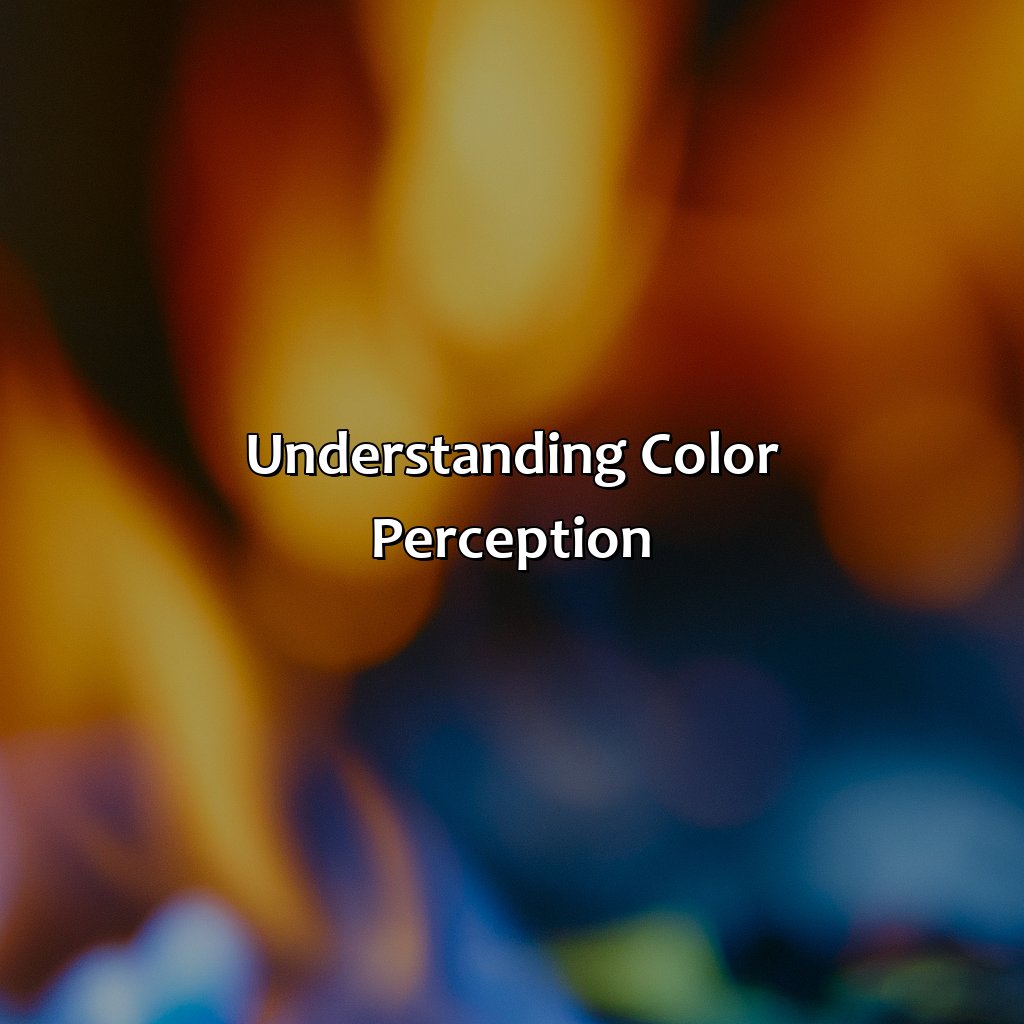
Photo Credits: colorscombo.com by Samuel Perez
Uncover the concept of color spectrum and human vision to better comprehend color perception in humans. Dive into detail to explore the visible spectrum, rainbow colors, and electromagnetic spectrum. Examine aspects of human color vision too – color cones, color blindness, and color perception differences.
Color Spectrum
The range of colors perceived by the human eye is known as the ‘visible spectrum’ and is part of the larger ‘electromagnetic spectrum’. The visible spectrum consists of all the rainbow colors, ranging from violet to red.
Below is a table showcasing the colors in order from shortest to longest wavelength:
| Color | Wavelength (nm) |
|---|---|
| Violet | 380-450 |
| Blue | 450-490 |
| Green | 490-570 |
| Yellow | 570-590 |
| Orange | 590-620 |
| Red | 620-750 |
It’s important to note that some animals, like birds and insects, can see beyond the visible spectrum and perceive ultraviolet or infrared light.
Exploring unique details about color perception, it’s interesting to note that different cultures perceive colors differently, with some languages having multiple words for a single color and others lumping together what Westerners would consider distinct shades. However, color perception remains largely universal across individuals within a given culture.
Pro Tip: Utilize color theory to create visually appealing designs that effectively communicate your message.
Get ready to see things in a whole new light as we explore the intricacies of human color vision.
Human Color Vision
Color Perception in Human Beings
The way human beings perceive color is based on the function of specialized cells known as color cones, located in the retina at the back of each eye. These cones contain pigments that respond to particular wavelengths of light and send signals to the brain which interpret them as colors. Color blindness occurs due to a deficiency or abnormality in these pigments, resulting in difficulty distinguishing certain colors.
In addition, there are differences in color perception between individuals due to genetics, age, and exposure to certain environmental factors. For example, women generally have better color discrimination than men due to having more variants of the X chromosome containing cone pigments.
Research into various aspects of color perception has helped us better understand how we perceive different hues and shades. This knowledge has been applied in various industries such as fashion, marketing and design to make informed decisions regarding color choices.
Fire may be hot, but its colors are hotter – let’s dive into the mesmerizing world of flame hues.
The Color of Fire
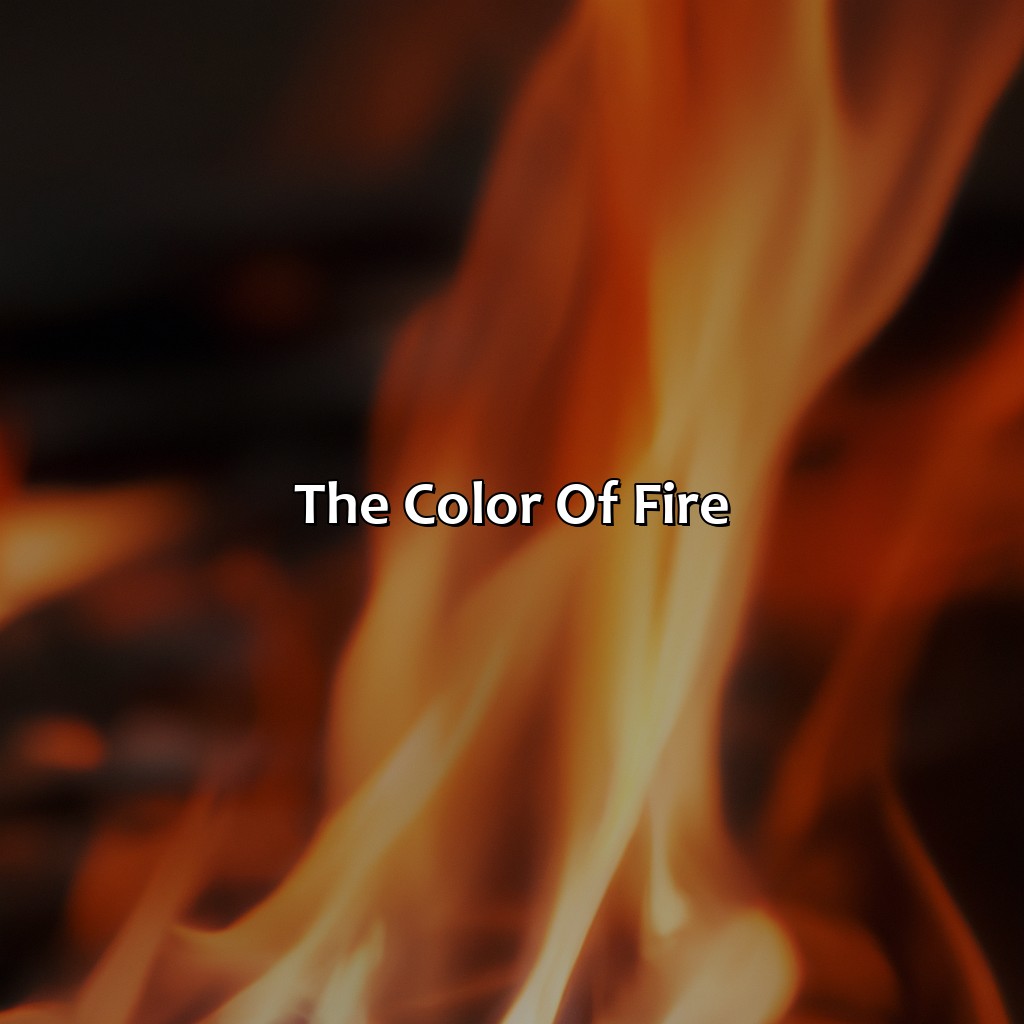
Photo Credits: colorscombo.com by Terry Williams
To get to grips with the science of fire’s colour, take a look at “The Colour of Fire”. It consists of two subsections:
- “Determining the Colour of Flame” – it tells us how the flame’s temperature, composition and material affect its colour.
- “Factors Affecting Flame Colour” – the second discusses how energy, chemical reaction, fuel type, and environment can all influence flame colour.
Determining the Color of Flame
The chromaticity of flames is key in understanding the fire’s composition, which relates to flame temperature and the material burned. Flame color can be determined empirically using the excitation of different chemicals present in the flame material, causing it to emit light. The raw materials of combustion and oxygen supply greatly affect these emission spectra, with hydrocarbon content producing yellow/orange hues while copper ions produce blue-green tones.
Factors that influence flame colors include fuel carbonization degree, hydrocarbons present, location in the combustion zone, and an oxidant concentration. Flames powered by methanol or ethanol burn blue from chlorinated solvents, high flamed alcohols seem green, whereas low-flamed alcohols appear red.
It’s crucial to know the color of a flame since it is used as a critical indicator for detecting intrinsic factors such as gas leaks/LPG quality or more complex chemical compounds. Understanding elements affecting flame hue can aid in optimizing industrial processes leading to better safety measures at production sites.
The color of a flame can reveal clues about its energy, chemical reaction, fuel type, and environmental conditions.
Factors Affecting Flame Color
The elements contributing to the appearance of flames are multifarious, with certain underlying variables that make flame color possible. Differentiating factors in flame rendition can be attributed to the fuel type, chemical reaction, and environmental conditions leading to energy expenditure. The table below shows some of the significant components affecting flame color.
| Factor | Description |
| Fuel Type | Organic fuels tend to produce a yellow or orange-colored flame while metallic salts contribute colorful and vibrant flames. |
| Chemical Reaction | A potent chemical reaction triggers an increase in temperature which helps create a bright and vivid blaze of various colors. |
| Environmental Conditions | Corn combustion in low-yielding oxygen environments creates sooty deposits leading to the coloration of fires. |
In addition, certain metal ions in fuels react with light wavelengths and have their spectral lines making them appear differently colored within a fire’s plume. Furthermore, other factors such as heating rates and pressure variations affect the final perceived color of flames.
It is interesting to note that Blue (almost invisible) flames that burn hotter than red/yellow colored ones are responsible for welding torches’ natural gas ignition. People viewing such an event could end up sensing a ‘cool’ visual prominence during high-velocity progressions into the sky.
According to Science ABC, Copper sulfate burns blue because it emits high-energy photons when heated.
From fiery reds to blues so bright, the colors of fire are truly a sight.
Different Colors of Fire

Photo Credits: colorscombo.com by Andrew Jones
Gaining insight into the hues of fire? This piece takes a look at:
- red and orange, yellow and blue flames.
- Sub-sections analyze:
- red and orange flame colors
- yellow flame temperature
- the chemistry of blue flames.
Red and Orange Fires
The fiery hues of red and orange flames are determined by the temperature and composition of the fire. These striking colors are usually seen in open flames such as those from a candle, campfire, or propane torch. The hue and intensity of the red flame is often associated with hot temperatures and is commonly found in forest fires, while orange flames occur at a relatively lower temperature.
Besides temperature, the chemical composition of the fuel being burned can also affect the color spectrum of fire. For instance, when sodium salts or iron oxide particles are present in burning material, they emit a bright yellow-orange light. Similarly, lithium causes purple-colored flames when it comes into contact with fire.
Interestingly, red and orange colored flames have been captured by artists throughout history to create breathtakingly beautiful pieces that capture their intense glow. Notably, these bold shades represent strong emotions like passion and courage in various cultures around the world.
Yellow flames may not be as hot as blue flames, but they still bring the heat with their higher color temperature.
Yellow Fires
Yellow Flames – Yellow flames can be seen in various scenarios like a candle flame, incandescent light bulbs, or gas stoves. Yellow flames indicate incomplete fuel combustion and emit lower amounts of light energy compared to blue flames. The yellow color primarily arises due to the presence of tiny soot particles that get heated up and emit photons, giving yellow color signals.
Furthermore, the color temperature of yellow flames is lower than that of blue flames. It generally ranges between 2000-3000 K since longer wavelengths get emitted around this spectrum. This is also the reason why yellow lights seem warmer than white lights which have higher color temperature values.
Yellow flames can be observed in barbecue grills if there’s inadequate air supply because incomplete combustion takes place. The excess propane also contributes to these yellow flames as it doesn’t burn efficiently when released in small quantities.
In practical terms, it would be ideal to use blue flames over yellow ones as they are hotter and release more light energy in comparison. Therefore it’s necessary to ensure complete fuel burning through efficient ventilation or hardware maintenance as it increases energy utilization while reducing greenhouse gas emissions.
Why settle for ordinary orange flames when you can have a mesmerizing blue blaze?
Blue Fires
Blue Flames: An In-Depth Look into the Chemistry of Fire Color
Fire’s blue flame is a representation of a higher temperature than those produced by reds and oranges. Blue flames are created when fuel gases are heated to temperatures between 2,600 and 3,000 degrees Fahrenheit. This heat level excites the molecules in the fuel, causing them to emit energy in the form of light.
When fuels, such as natural gas or propane, burn efficiently, they produce a clean-burning, blue flame due to their combustion chemistry. The blue color is caused by molecular emissions from carbon dioxide and water vapor that mix with orange-yellow soot particles that remain relatively cool. The presence of oxygen during combustion also contributes to the appearance of blue flames.
Unique details about blue flames include their low luminosity and almost invisible nature when viewed in bright light. Although blue fires aren’t visible in broad daylight, they are essential in identifying certain materials which require high temperatures for processing.
On hot summer days almost everyone has seen an outdoor chemical formula burning over a bunsen burner outside a laboratory building; however few understand what is occurring beyond a colorful burn marked as “indoors use only”. These colors can range from pinks and greens to intense blues and depend on various elements being introduced into the flame. Who knew the color of fire could have such important practical applications in various industries?
Practical Applications

Photo Credits: colorscombo.com by George Gonzalez
To apply flame color practically, explore ‘Practical Applications: Significance of Flame Color and Use of Flame Color in Industries’. In the Significance of Flame Color section, find out about fire symbolism, psychology, and perception. In the Use of Flame Color in Industries part, investigate how flame color is used in pyrotechnics, fireworks, photography, design, branding, and storytelling.
Significance of Flame Color
The Color of Flames can hold significant meaning and relevance in various industries. Flame color is often an indicator of the chemical compounds present in the material being burned, making it useful in fire safety, environmental monitoring and forensic science. Beyond practical applications, flames have been used throughout history as a powerful symbol in art, literature and spirituality. Fire symbolism points to its many meanings that involve emotions, personality types, psychology and mental states which leads to different human perceptions towards fire color. In fire perception psychology, the color of fire draws attention and can elicit physiological responses such as increased heart rate and perspiration. Therefore, understanding the significance of flame color holds both scientific and cultural importance.
Flame Color plays a crucial role in various fields with diverse applications:
- In Material engineering, flame color is used to gauge temperature during welding or developing of materials.
- In Glass-making, scientists use specific colored-flames to alter glass composition while ensuring strength and clarity.
- In Pyrotechnics, set colors are produced by incorporating chemicals into flames!
The application varies but all highlight that having knowledge about flame colors could serve many purposes.
In addition to determining temperatures or identifying chemical compositions of substances from their flame colors, different hues may represent unique psychological message since numerous cultures connect certain shades with particular emotions or ideas ranging from power (red) to tranquillity (blue). The symbolic meanings associated with each shade can be found within works of literature that explore themes dealing with deep-rooted primal instincts from fear (orange) to hope (yellow)! Different people’s perception of these fire colors holds much significance for understanding human behavior patterns and underlying biases.
A distinct reality confirmed through research conducted by neuroscientists showed that humans privilege some colors over others due to biological mechanisms known as S-cones (Short-wavelength-sensitive cones.) which are located in our eyes’ retina – typically they are most sensitive between 420-440nm wavelengths making blue hues seem louder than greens or even orange yellows! From pyrotechnic displays to branding strategies, the use of flame color in various industries is a powerful tool for visual storytelling.
Use of Flame Color in Industries
Industries utilize flame color for a variety of purposes, including pyrotechnics and fireworks displays. Flame color can also play an essential role in photography, design, and branding strategies for businesses. By understanding the science behind flame color, industries can create sensational storytelling experiences while enhancing brand identity.
The use of flame color in pyrotechnics is particularly significant as it allows the creation of unique fireworks displays that leave lasting impressions on viewers. Additionally, photographers often use candlelight to bring out the colors of their subjects. Brands have incorporated the color motif in storytelling campaigns to evoke emotions and build deeper connections with customers.
Some Facts About What Color Is Fire:
- ✅ Fire can appear blue or purple when it burns certain chemicals or minerals. (Source: Science Focus)
- ✅ The color of a flame is determined by the temperature and the chemicals involved in the combustion process. (Source: ThoughtCo)
- ✅ A candle flame can appear yellow, orange, and even white as it burns different parts of the wax. (Source: Popular Science)
- ✅ The sun’s flames appear white to our eyes due to the combination of all colors of light. (Source: NASA)
- ✅ Flames in a fireworks display can be a variety of colors due to the addition of specific chemicals that burn and release certain wavelengths of light. (Source: National Geographic)
FAQs about What Color Is Fire
What color is fire?
Fire is typically considered to be orange, red, yellow, or white in color. The exact color of fire can depend on a variety of factors, including the temperature and the types of elements or chemicals present in the flames.
Why does fire change color?
Fire changes color as it gets hotter or cooler. At lower temperatures, fire tends to be red or orange, while at higher temperatures it can shift to white or blue. The specific hue of the flames can also be affected by the gases and materials that are burning.
What causes blue flames?
Blue flames are typically caused by hotter burning temperatures. When a fire burns particularly hot, such as when burning ethanol or methane, the flames can appear blue. The blue color comes from excited molecules and the wavelength of light that is emitted.
Can fire be a different color than orange or red?
Yes, fire can be a variety of colors depending on the temperature and the materials burning. For example, green flames can occur when copper is burned, and purple flames can occur with the use of some chemical compounds. However, orange and red are the most common colors associated with fire.
Why are some candles different colors?
Candles can be made in a variety of colors using different types of dyes or pigments. When the candle burns, the color of the flame can be affected by the color of the wax and the type of dye used. For example, a red candle may produce a flame that is slightly more orange or yellow in color.
What does the color of fire signify?
The color of fire can have different meanings in various cultures and contexts. In general, fire is often associated with warmth, light, and energy. The color of the flames can sometimes be used to indicate the type of materials being burned, or to suggest the intensity or power of the fire itself.
